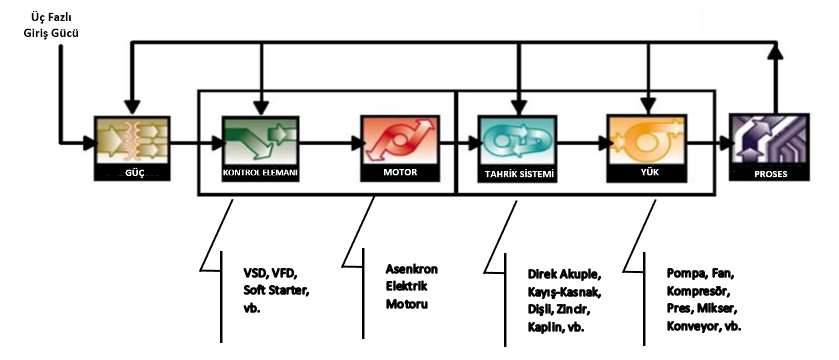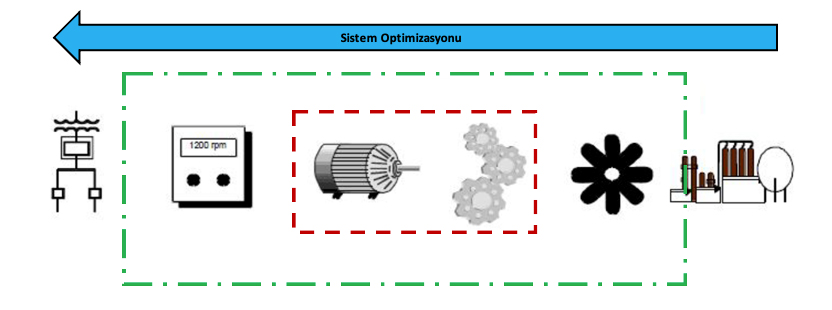How To Select The Most Suitable Energy Efficient Motors For Enterprises?
The electricity consumed by electric motors in enterprises accounts for 70 percent of the total electricity consumption. Electric motors in enterprises are most commonly used to operate the pumps in process cooling and/or chiller cooling systems; for cooling tower fans; the fans and pumps in steam boilers, hot water boilers, oil boilers, etc.; the fans in air conditioners, ovens and dryers; compressed air compressors; and the various production machines and conveyor equipment used in production processes. As can be understood, enterprises make use of many electric motors in their operations, with various power outputs. For this reason, the contributions energy efficiency improvements can bring to enterprises are quite significant. In general, there are four main components to electric motor systems:
- Electric motor
- Drive system
- Motor control element
- The load run by the motor.

When evaluating the level of efficiency of the motor in the operation of electric motor systems, it should be investigated how the system fed by the motor can be optimised as a whole, meaning how it should be used in the most appropriate and efficient way. In other words, the study should start by determining what is the need for the end-use point in the system. Moreover, for the selection of the most efficient motor, it is highly important when determining the efficiency of the system, considering the efficiency and losses of the system components shown in the diagram above.

In the energy efficiency studies of electric motor systems and the selection of the most suitable motor in terms of efficiency, the first step to be taken is the assessment of the existing motors in the enterprise, taking into account annual operating hours, nominal powers, the working load, the number of rewindings, the manufacturing year and efficiency classes, especially for motors with high annual working hours and/or those operated 24/7, with multiple rewindings, with low efficiency classes, such as IE1, IE0, Eff1, Eff2, Eff3, or old motors.
Thereafter, the current, voltage, power, heat loss, etc. of the motors in question should be measured. Choosing motors with a higher efficiency class but, if possible, a lower rated power, especially for motors operating at low loads, is an issue that should be considered to achieve maximum efficiency, taking into account such criteria as working load and working hours of the motors. If it is not possible to reduce the motor power, a higher efficiency class motor providing the same power may be chosen, although the speed control adjustment of higher efficiency motors to provide the same output is another critical and important factor in ensuring energy efficiency.
In this process, making evaluations not only for the electric motor, but also for the drive system (belt-pulley system, gear system, etc.), motor control equipment and the load that feeds the motor (pump, fan, process / production machine, etc.), and taking into account the efficiency and losses of each component, are other important points to be considered when selecting the motor with the most appropriate efficiency, as each component operating in the system affects system efficiency with a multiplier effect, and the change of the efficiency of each component together brings much greater efficiency.